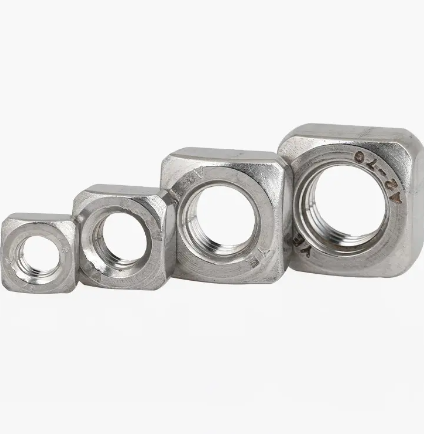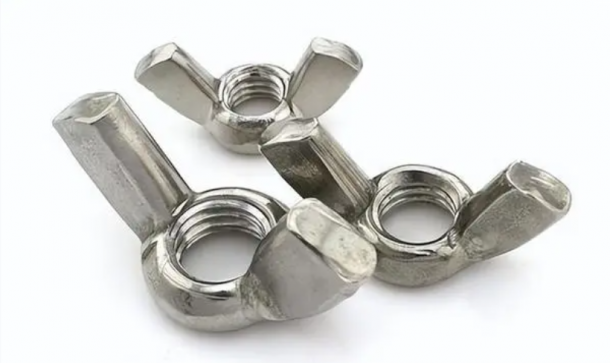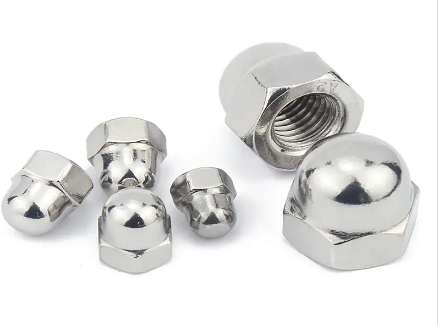A nut is a nut, which is a part that bolts or screws are screwed together for tightening. Nuts are divided into several types according to different materials: carbon steel, stainless steel, copper, etc. Common types of nuts include external hexagon nuts, square nuts, lock nuts, wing nuts, flange nuts, cap nuts, etc.
1. External hexagonal nut
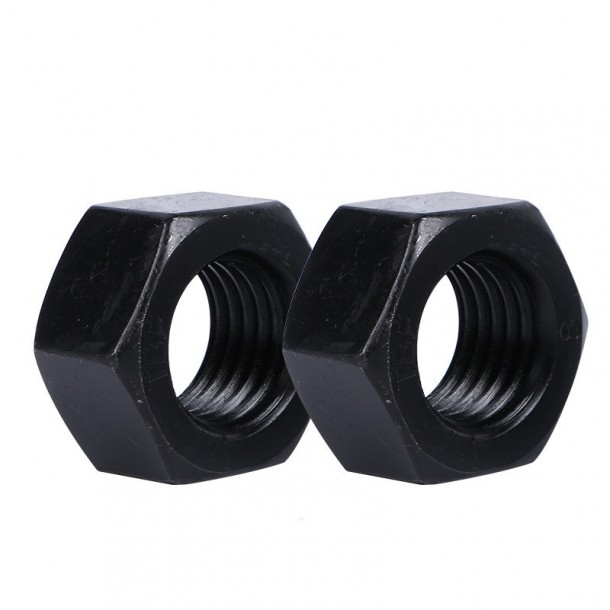 Hexagonal nuts are one of the most common nuts that are hexagonal in shape and are often used with bolts. It is characterized by simple structure and easy processing, and is suitable for connections with high strength requirements, such as automobile engines, aerospace and other fields. The hexagonal nut is mainly used in conjunction with bolts and screws to connect fasteners. According to the nominal thickness, they are divided into three types: type I, type II and thin type. Nuts above grade 8 are divided into two types: type I and type II. Type I nuts are divided into three grades: A, B and C.
Hexagonal nuts are one of the most common nuts that are hexagonal in shape and are often used with bolts. It is characterized by simple structure and easy processing, and is suitable for connections with high strength requirements, such as automobile engines, aerospace and other fields. The hexagonal nut is mainly used in conjunction with bolts and screws to connect fasteners. According to the nominal thickness, they are divided into three types: type I, type II and thin type. Nuts above grade 8 are divided into two types: type I and type II. Type I nuts are divided into three grades: A, B and C.
2.Square nut
Because the shape is square, it is also called a square nut, also called a square nut or square nut. The square nut is a kind of welding nut, which uses high temperature to melt a certain metal and then weld it between two products to tighten it. The fastening effect of this kind of connection will be very good and will not loosen easily. It is widely used in road transportation, home building materials and other industries. Covering almost all fields of fastener needs, it is one of the common mechanical fasteners.
3. Lock nut
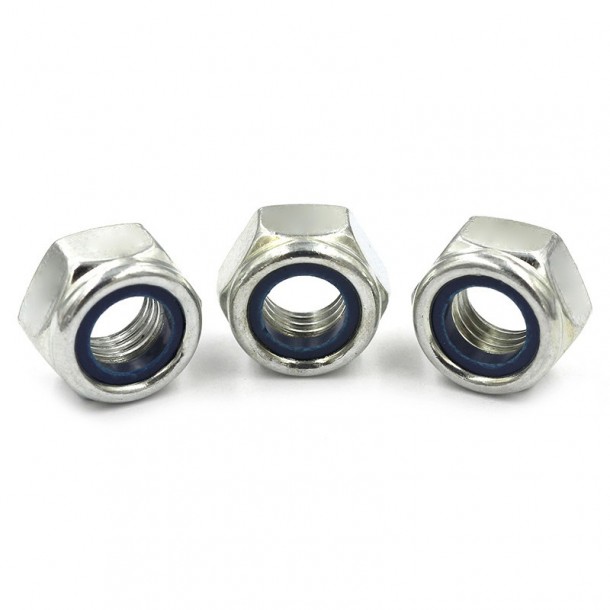
The lock nut is a nut widely used in machinery and other industries. Its working principle is to self-lock using the friction between the nut and the bolt. Special plastic rings are used to increase nut friction and reduce loose nuts. It performs the important function of preventing fasteners from loosening and becoming dislodged due to vibration or other actions. Common lock nuts include spring lock nuts, wedge lock nuts, etc.
4.Wing nut
Wing nuts are a type of nut with a unique shape, and the protruding curvature of the head resembles a beautiful butterfly. Wing nuts not only look good, but also have great functional applications. Generally speaking, wing nuts can be divided into cold heading wing nuts, cast wing nuts and stamped wing nuts according to their different processing techniques. According to their shapes, they can be divided into square wing wing nuts and round wing wing nuts. a basic shape.
The butterfly nut does not require other tools when used. It is specially designed to facilitate hand-tightening operations. The butterfly-shaped design of the head increases the lateral stress surface, making hand-tightening more efficient. It is mainly used in medical equipment, wind energy, electricity, For equipment that requires frequent disassembly and maintenance such as aerospace, office equipment, petrochemical industry, electronic communications, and shipbuilding industries.
5. Flange nut
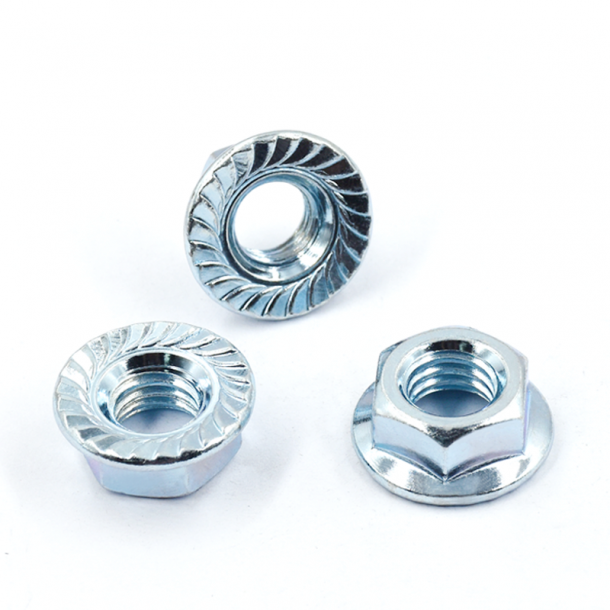
Also known as padded nuts, toothed nuts, hexagonal flange nuts, flange nuts, etc., its dimensions and specifications are the same as those of hexagonal nuts, except that its gasket and nut are integrated, and there are anti-slip teeth underneath. The grooves increase the surface area of contact between the nut and the workpiece. Compared with the combination of ordinary nuts and washers, the anti-loosening performance is stronger.
6. Cap nut
As the name suggests, the cap nut is a hexagonal nut with a cover. The main function of the cover is to prevent the exposed part on the outside of the fastener from being covered, so as to prevent moisture or other corrosive substances from entering inside and thus play an anti-rust role, thereby improving its own and The age of the connector.
The above are the types of nuts commonly used in the market. Each nut has its specific performance advantages and applicable application scenarios. Therefore, when selecting a nut, you need to confirm the more suitable one based on specific needs, usage scenarios, and performance requirements. type of nut.
Post time: Feb-18-2024

